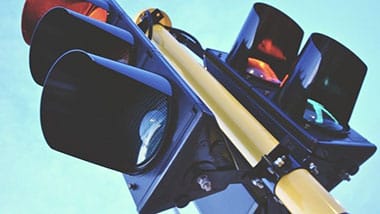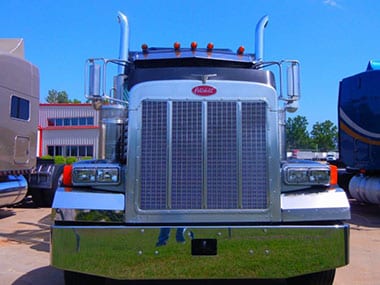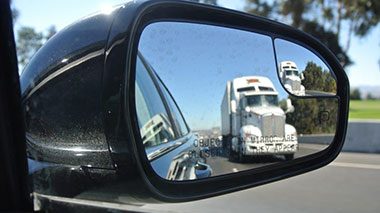Dangers Of Trucks Stopped On Interstate Shoulder
Truck AccidentsRobert Allen Topping, II, died after striking the rear end of a service truck and then a disabled semi-truck on Interstate-4 near State Road 33 on July 11, 2017. Topping was driving a 2006 Isuzu pickup truck and is reported to have left the outside lane for unknown reasons and hit the other vehicles on the shoulder of the roadway. The 2012 Ford F250 service truck was driven by Luis Marrerro-Rosado while the 2013 Freightliner was driven by Reginald David. The semi-truck had a flat tire. Mr. Topping was wearing a seat belt and alcohol was not a factor. No mention was made of warning triangles or flares.
Legal Contributing Causes Of The Accident
While Mr. Topping’s vehicle going onto the shoulder is a cause of the crash, the lack of use of required warning devices may also be partially to blame. Many people might be quick to judge that this accident would not have happened if Mr. Topping hadn’t hit the vehicles on the shoulder. While that may be true, it is an all too often occurrence that cars and trucks get hit while on the shoulder. The question is why and do they share any degree of blame.
These accidents happen so often that, particularly with semi-trucks on the shoulder, that the Federal Motor Carrier Safety Administration (FMSCA) has a rule requiring semi-truck drivers to place warning triangles or flares out even when they are stopped on the shoulder of the highway. The reason for this is because studies show that these warnings are effective at preventing accidents from happening.
A Warning Triangle Or Flare Gets Your Attention
As people drive down the road, they tend to get in a “zone” where their actions become relative to those around them. A vehicle that is stopped on the shoulder is often perceived by drivers in the “zone” as being in a lane of travel. This illusory effect is what causes these type of accidents where a vehicle stopped on the shoulder gets hit at highway speed. While it is a mistake made by the driver who is moving, stopping on the roadway without proper warnings has been the subject of many “human factors” experts.
So What Is Required Of A Truck Driver Stopped On The Shoulder?
A truck driver is required by 49 C.F.R. §392.22 to place warning triangles or flares out within 10 minutes of stopping on the shoulder in addition to flashing hazard lights. It is important to notice that the rule requires warnings even when stopped on the shoulder and not just in the roadway. The rule also applies even during daytime hours rather than just at night.
§392.22 Emergency signals; stopped commercial motor vehicles.
(a) Hazard warning signal flashers. Whenever a commercial motor vehicle is stopped upon the traveled portion of a highway or the shoulder of a highway for any cause other than necessary traffic stops, the driver of the stopped commercial motor vehicle shall immediately activate the vehicular hazard warning signal flashers and continue the flashing until the driver places the warning devices required by paragraph (b) of this section. The flashing signals shall be used during the time the warning devices are picked up for storage before movement of the commercial motor vehicle. The flashing lights may be used at other times while a commercial motor vehicle is stopped in addition to, but not in lieu of, the warning devices required by paragraph (b) of this section.
(b) Placement of warning devices—(1) General rule. Except as provided in paragraph (b)(2) of this section, whenever a commercial motor vehicle is stopped upon the traveled portion or the shoulder of a highway for any cause other than necessary traffic stops, the driver shall, as soon as possible, but in any event within 10 minutes, place the warning devices required by §393.95 of this subchapter, in the following manner:
(i) One on the traffic side of and 4 paces (approximately 3 meters or 10 feet) from the stopped commercial motor vehicle in the direction of approaching traffic;
(ii) One at 40 paces (approximately 30 meters or 100 feet) from the stopped commercial motor vehicle in the center of the traffic lane or shoulder occupied by the commercial motor vehicle and in the direction of approaching traffic; and
(iii) One at 40 paces (approximately 30 meters or 100 feet) from the stopped commercial motor vehicle in the center of the traffic lane or shoulder occupied by the commercial motor vehicle and in the direction away from approaching traffic.
(ii) Daylight hours. Except as provided in paragraph (b)(2)(iii) of this section, during the period lighted lamps are not required, three bidirectional reflective triangles, or three lighted fusees or liquid-burning flares shall be placed as specified in paragraph (b)(1) of this section within a time of 10 minutes. In the event the driver elects to use only fusees or liquid-burning flares in lieu of bidirectional reflective triangles or red flags, the driver must ensure that at least one fusee or liquid-burning flare remains lighted at each of the prescribed locations as long as the commercial motor vehicle is stopped or parked.
This Case Is A Wrongful Death Case
Despite the fact that Mr. Topping’s vehicle struck the rear end of the vehicles on the shoulder, this is still a wrongful death case in Florida. The semi-truck with the flat tire was likely stopped on the shoulder for much longer than 10 minutes and would have been required to place warnings out. The same may apply to the service truck as I would expect that changing a flat tire on a semi-truck would take longer than 10 minutes.
The fact that warnings were not in place despite the rule requiring their use means that the trucks were effectively “illegally stopped” on the shoulder which should be enough evidence to defeat the presumption of negligence in rear end collisions in Florida. This is often thought of as “comparative fault” in Florida and it is ultimately up to the jury to decide if there is legal liability and in what percentage.
While the jury is free to do as they see fit, a case such as this one is not frivolous under Florida law as some people might think. As mentioned above, the danger of stopping on the shoulder a real and studied risk often enough to where the federal government has made a rule about it for semi-trucks.
Florida has also adopted the same rules and made them law for both interstate and intrastate commercial vehicle traffic.
316.302 Commercial motor vehicles; safety regulations; transporters and shippers of hazardous materials; enforcement.—
Both Insurance Companies Should Settle
The final twist to this case is that both insurance companies should pay the people injured in the accident. The truck driver, if injured, should be compensated by Mr. Topping’s insurance company because Mr. Topping could have paid more attention to the roadway. Likewise, the insurance company for the semi-truck should compensate the estate of Mr. Topping and his survivors because the truck driver should have placed warning triangles or flares on the shoulder. The same probably also applies to the service truck.
Cases like this with a significant amount of comparative fault on both drivers usually settle because of the uncertainty in the potential outcome at trial. If a comparative fault case goes to trial, the jury decides the percentage of fault between the parties. Thereafter, the judgment is entered based on the difference in damages (as reduced accordingly for comparative fault). Needless to say, the value in settlement is that all parties end up with something rather than only one.
Get Help From A Lakeland Personal Injury Attorney
If your accident case is similar, you should contact a Lakeland, Florida personal injury attorney to discuss whether you have a lawsuit. A consultation with an attorney is free. Commercial truck accident cases are complicated and involve rules, regulations, and statutory law from different sources. This is where we can help you. Read on for more on choosing an attorney to represent you.
St. Petersburg man dies in I-4 crash Read more: https://t.co/dUypusOBL8 https://t.co/dUypusOBL8
— The Ledger (@theledger) July 13, 2017


